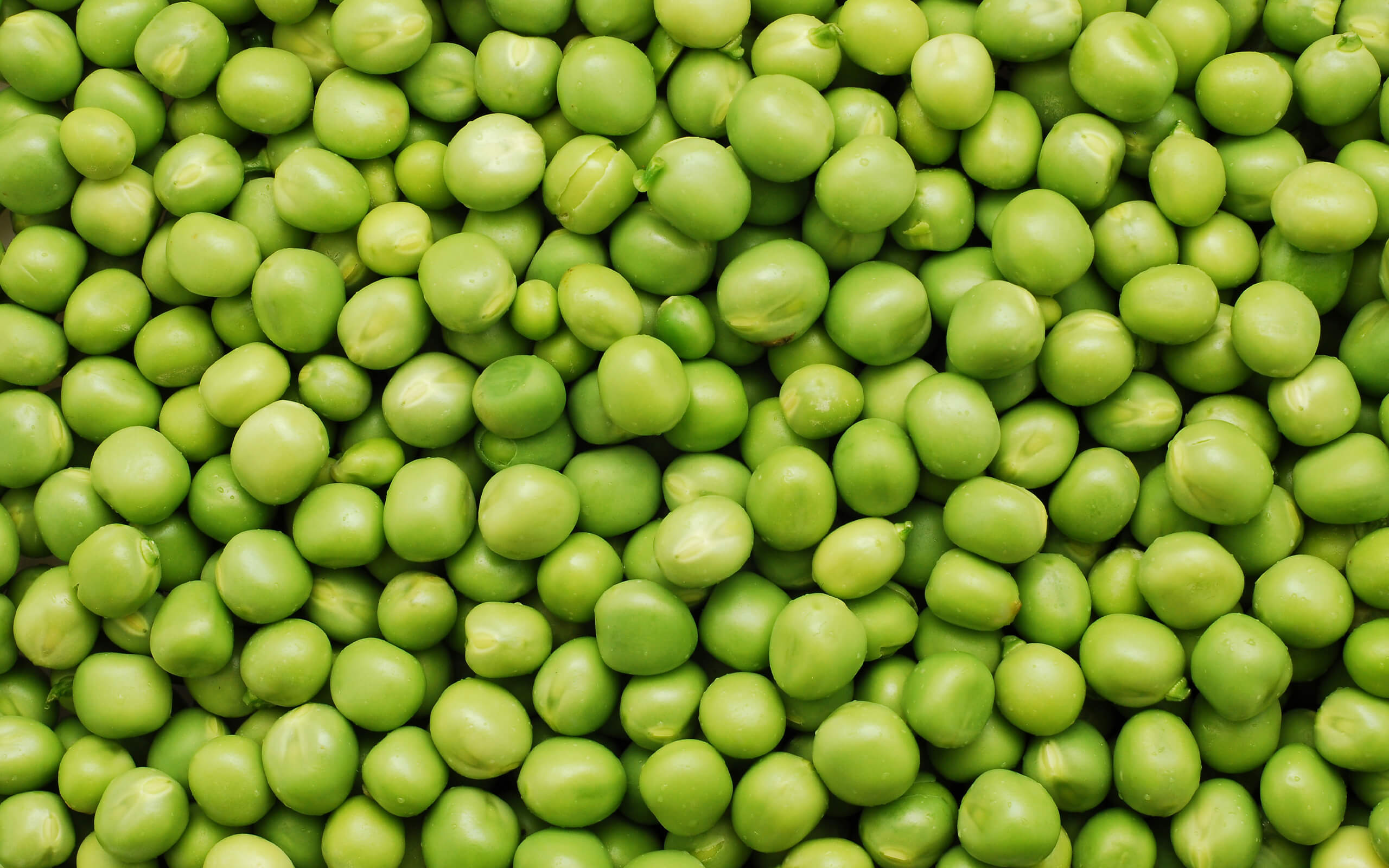The global human population is projected to reach 9.6 billion by 2050.[1] One of the major challenges we will face is producing enough food for this staggering amount of people in a way that doesn’t contribute to the further breakdown of the environment. We need to move towards more sustainable farming and a shift to more plant-based diets is inevitable. Plant-based diets have repeatedly been shown to be more sustainable and will allow for food security now and in the future.[2]
Legume crops are especially interesting since they are protein-packed and deliver multiple services in line with sustainability goals. Legumes are plants that belong to the Leguminosae family that comprises 20,000 species.[3] Some well-known examples include chickpeas, lentils, peas, soybeans and even peanuts. What is so special about legumes and how can they contribute to a sustainable future?
Legumes are a healthy food option
Legumes are a great source of protein and calcium, but unlike animal products, contain low levels of fat and no cholesterol. Soy beans, peas, kidney beans, chickpeas, pinto beans and lentils are just some examples of the huge variety of legumes out there. The healthy carbohydrates found in these foods release gradually providing a stable source of energy.[4] Additionally, also unlike animal products, legumes are high in antioxidants and fiber.
Legumes fix atmospheric nitrogen
The most notable aspect that sets legumes apart from other plants is their ability to supply up to 90% of their own nitrogen (N).[5] Nitrogen is essential for plant tissue growth and the formation of chlorophyll needed to perform photosynthesis. Non-legume plants rely on nitrogen to be fixed in the soil in the form of nitrate and ammonium. However, legumes have formed an alliance with a certain species of bacteria that makes nitrogen gas present in the soil air available for the plant.
Shortly after a legume seed germinates, Rhizobia bacteria move into the root. The bacteria multiply and form pink nodules on the legume roots. The Rhizobia bacteria and the legume plant form what is known as a symbiotic relationship, in which both parties benefit from the alliance. The bacteria have the ability to bind nitrogen gas present in the soil air by forming ammonia. They do this by feeding on the carbohydrates produced through photosynthesis by the host legume. The bacteria then form ammonia with the hydrogen from the plant’s carbohydrates and the nitrogen from the soil air. Now the plant can use this ammonia as a nitrogen source to grow. The bacteria benefit from the carbohydrates and the legume plants from the increase in nitrogen availability.
Legumes reduce the need for fertilizers
One of the leading concerns related to crop sustainability is the use of fertilizers.[6] Fertilizers are added to crops to provide nitrogen and other essential nutrients to the plants. The problem is that fertilizers can be washed out of the soil through irrigation and heavy rains ending up in aquatic systems. Excess nutrients lead to a process known as eutrophication. This is when algae grows rapidly covering the surface of a body of water and thereby blocking sunlight from the water below. This kills oxygen-releasing vegetation in the water, causing fish and other marine life to become starved of oxygen. The great thing about legume crops is that they reduce the need for nitrogen fertilizers, since the plants can use nitrogen in the soil air, reducing the environmental concerns related to fertilizer use.
Legumes reduce greenhouse gas emissions
Recent studies have shown that legume crops emit around 5-7 times less greenhouse gases compared with other crops.[7] This is because of the reduced need for fertilizers. The nitrogen fertilizer production industry is responsible for the release of vast amounts of CO2 into the atmosphere each year.[8] Agriculture is also responsible for nitrous oxide emissions, mainly through the application of nitrogen fertilizers. Nitrous oxide represents only 5-6% of the atmospheric greenhouse gases, but is far more powerful than CO2.[9] In conclusion, legumes need less nitrogen fertilizers, greatly reducing the emission of both CO2 and nitrous oxide.
Legumes improve soil quality
Several legumes have roots that are half an inch in diameter and that can reach 8 feet deep. Additionally, nitrogen-rich legume plant residues attract earthworms. The root channels and earthworm burrows improve soil structure and porosity, allow for more air movement and allow water to infiltrate deep into the soil.[10]
Additionally, legumes contribute to an increased diversity of soil flora and fauna, keeping the soil healthy and alive. Greater numbers of soil microbes breakdown crop residues, returning the nutrients to the soil.
Growing the same crop in the same soil year after year gives pests and disease time to flourish in the soil. It also depletes the soil of nutrients and reduces crop health and yield. Legumes provide an excellent break for other crops like wheat and maize, and greatly reduce the build-up of weeds, insects and diseases.[11]
Are legumes the future?
Food legumes still occupy a minimal part of arable lands, which is mostly dominated by cereal crops.[12] From these cereal crops, a large proportion is meant for feed for farmed animals. The most cultivated legume is soybean, 80% of which is used for farmed animal feed.[13] In fact, 30% of the land surface of our planet is used for croplands and pastures used to feed the billions of animals meant for animal consumption.[14] Here lies a great opportunity for change so we can work towards food security for the ever-growing human population, while also mitigating the environmental issues we face. Shifting the way we eat towards a more plant-based diet will free up arable land for legume crops that is otherwise used for animal agriculture. These legume crops can be instrumental in recovering the soil and providing essential nutrition for the human population.
Good Catch is a pioneer in bringing about this dietary shift. Good Catch chefs evoke the experience of real seafood — including amazing taste and flaky texture — thanks to a unique protein-packed six-legume blend of peas, chickpeas, lentils, soy, fava beans and navy beans. This means we get the experience of the foods we know and love, while looking after our health and that of the planet.
[1] United Nations: World population prospects: The 2012 revision, key findings and advance tables. Working paper no. E
SA/P/WP.227; 2013 (United Nations, Department of Economic and Social Affairs, Population Division, New York).
[2] Poore, J.; Nemecek, T. (2018). Reducing food’s environmental impacts through producers and consumers. Science, 360(6392), 987–992.
[3] Lewis G, Schrire B, Mackinder B, Lock M. Legumes of the World. Kew: Royal Botanic Gardens; 2005.
[4] “Legumes: A quick and easy switch to improve your diet”, Harvard health publishing, www.health.harvard.edu/staying-healthy/legumes-a-quick-and-easy-switch-to-improve-your-diet
[5] “Legumes and soil quality”, USDA, www.nrcs.usda.gov/Internet/FSE_DOCUMENTS/nrcs142p2_053276.pdf
[6] Riley, W., Ortiz-Monasterio, I., Matson, P. (2001). Nitrogen leaching and soil nitrate, nitrite, and ammonium levels under irrigated wheat in Northern Mexico. Nutrient Cycling in Agroecosystems 61: 223–236.
[7] Jeuffroy MH, Baranger E, Carrouée B, Chezelles ED, Gosme M, Hénault C. Nitrous oxide emissions from crop rotations including wheat, oilseed rape and dry peas. Biogeosciences. 2013;10:1787–97.
[8] Jensen ES, Peoples MB, Boddey RM, Gresshoff PM, Hauggaard-NielsenH, Alves BJ, Morrison MJ. Legumes for mitigation of climate change and the provision of feedstock for biofuels and biorefineries. A review. Agron Sustain Dev. 2012;32:329–64.
[9] Crutzen PJ, Mosier AR, Smith KA, Winiwarter W. N2O release from agrobiofuel production negates global warming reduction by replacing fossil fuels. Atmos Chem Phys Discuss. 2007;7:11191–205
[10] “Legumes and soil quality”, USDA, www.nrcs.usda.gov/Internet/FSE_DOCUMENTS/nrcs142p2_053276.pdf
[11] Bowren, K.E., V.O. Biederbeck, H.A. Bjorge, S.A. Brandt, B.P. Goplen, J.L. Henry, H. Ukrainetz, T. Wright, and L.A. McLean. 1995. Soil Improvement With Legumes. 24 pp. Saskatchewan Agriculture and Food. (Internet site; www.gov.sk.ca).
[12] Siddique KH, Johansen C, Turner NC, Jeuffroy MH, Hashem A, Sakar D, Gan Y, Alghamdi SS. Innovations in agronomy for food legumes: a review. Agron Sustain Dev. 2012;32:45–64.
[13] “Soy”, WWF, wwf.panda.org/discover/our_focus/food_practice/sustainable_production/soy/
[14] “How will we feed the ever-growing human population?”, Faunalytics, faunalytics.org/how-will-we-feed-the-ever-growing-human-population/




